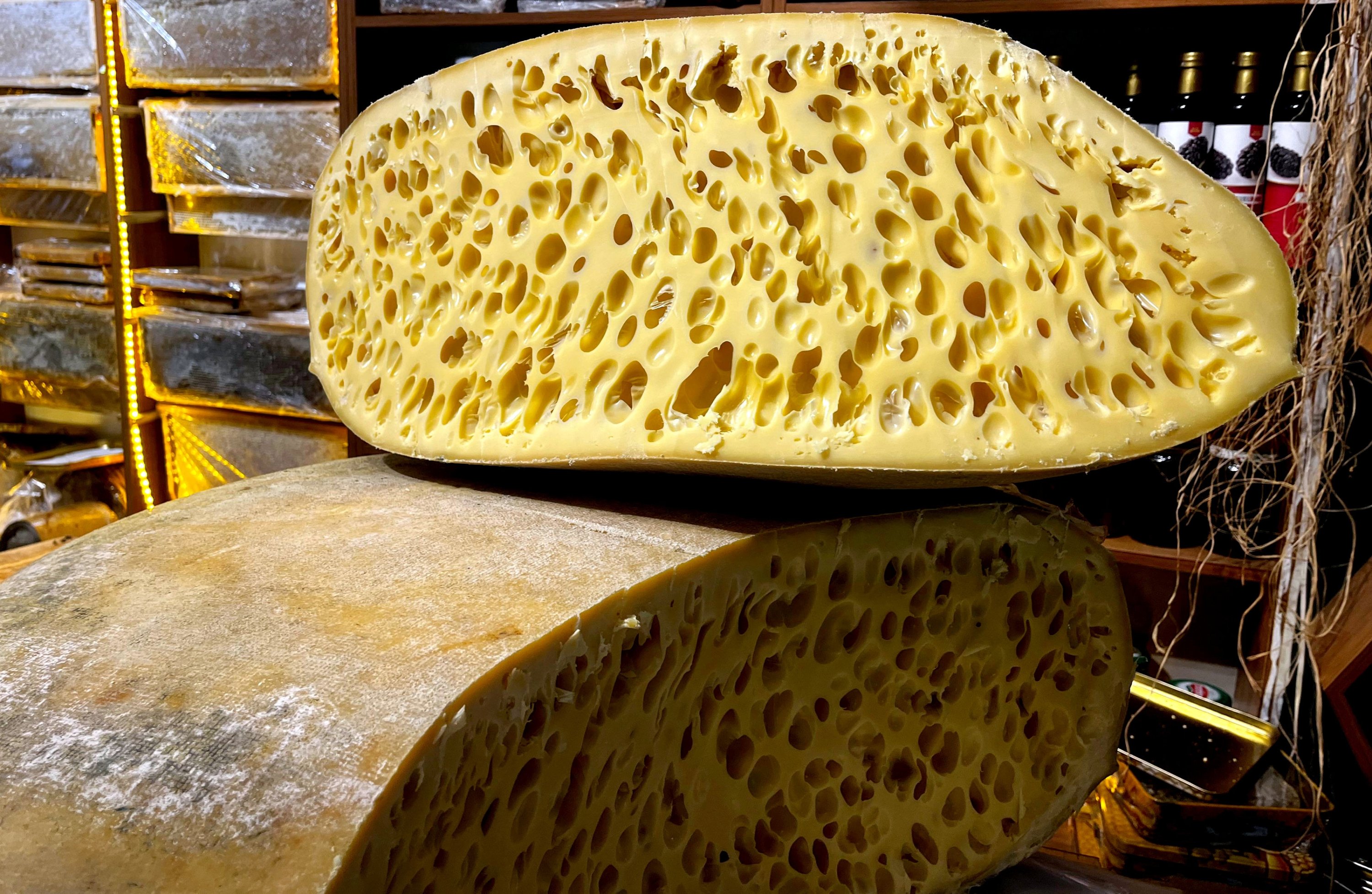[ad_1]
Gravyer cheese, produced from the milk of cows raised in the high-altitude plateaus of Kars in eastern Türkiye, has been officially certified with a geographical indication.
Producers in the region collect milk at local dairies, where it undergoes specific processes. The milk is then transferred to copper cauldrons, which are boiled and transformed into curds.
After being removed from the cauldrons, the curds are placed into molds, rested for 48 hours, and then stored in a cool room for approximately six to nine months to mature into gravyer cheese.
The Kars Chamber of Commerce and Industry (KATSO) applied to the Turkish Patent and Trademark Office in 2021, and on Sept. 17, gravyer cheese received its geographical indication certification.
KATSO Chair Kadir Bozan stated that approximately 200-250 tons of gravyer cheese are produced annually in the region.
“Production of the cheese comes with its challenges,” Bozan noted. “This cheese is very important for our city, and we will strive to promote our gravyer to the world. We have already begun efforts to obtain its geographical indication in Europe.”
Local resident Furkan Turut expressed his excitement over the certification, saying, “We have been waiting for this for a long time, and we hope to promote Kars gravyer to the world.”
In recent years, the Kars gravyer has garnered attention for its distinct flavor and artisanal production methods. The rise in demand for Turkish traditional cheese has not only contributed to the local economy but has also sparked interest in sustainable farming practices and the preservation of traditional cheese-making techniques. Producers in Kars are now working to promote this culinary heritage, aiming to enhance its global visibility while ensuring their artisanal practices’ continued success.
Source

Emil Kovács graduated from the Journalism program at Eötvös Loránd University in Hungary. During his journalism studies, he focused on data journalism, investigative reporting, and multimedia storytelling. He gained experience by writing for the university’s student newspaper, where he gained attention for his articles on social issues. After graduation, Emil began working as a reporter at a European news agency, where he conducts in-depth analyses of international news and current events.




